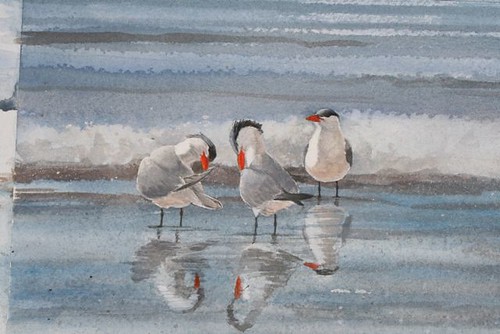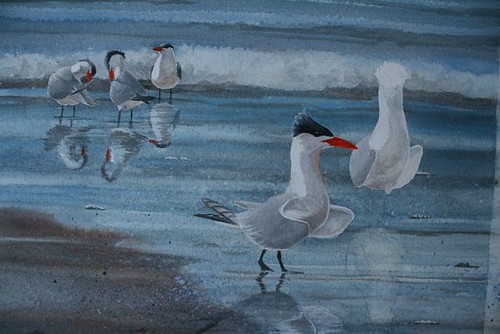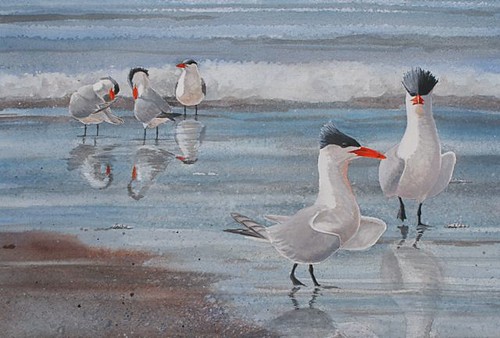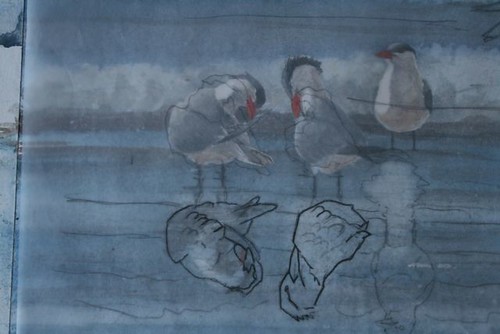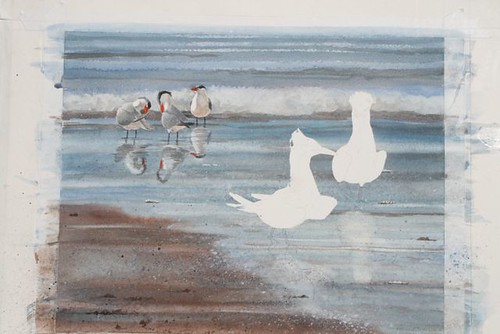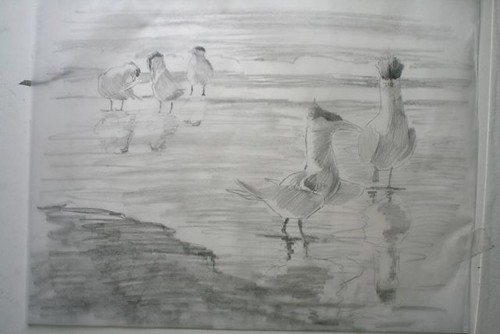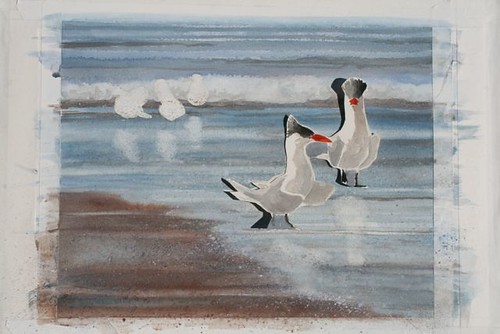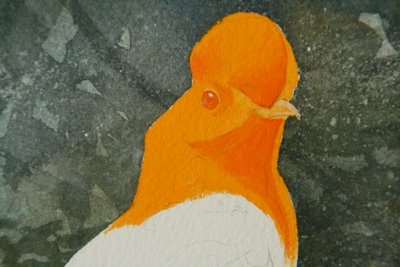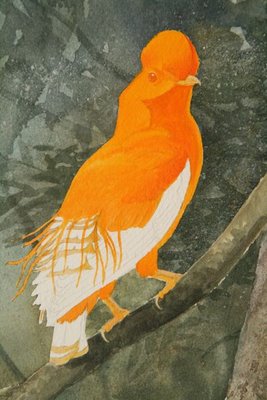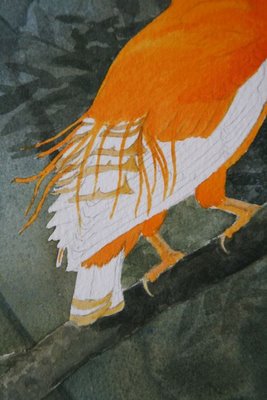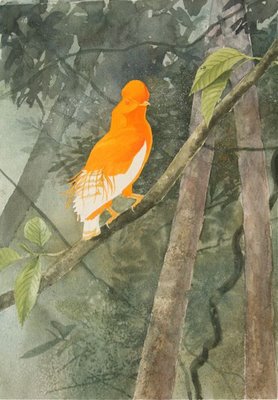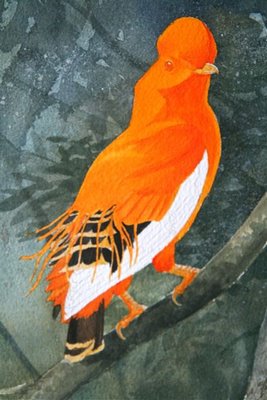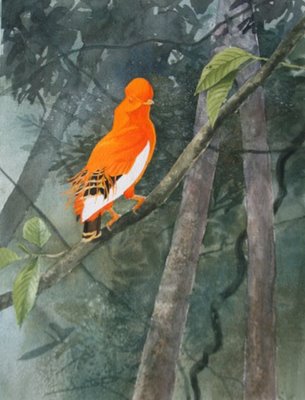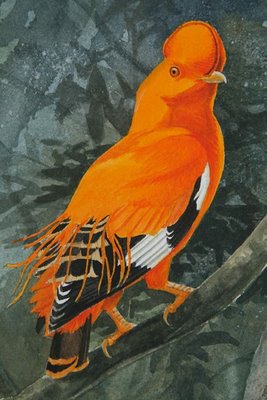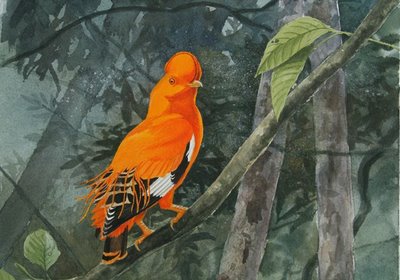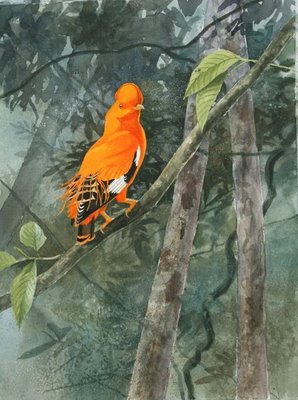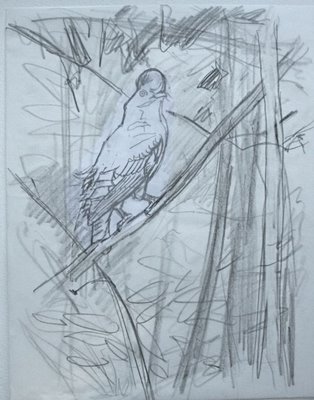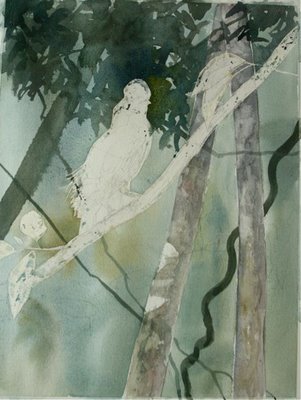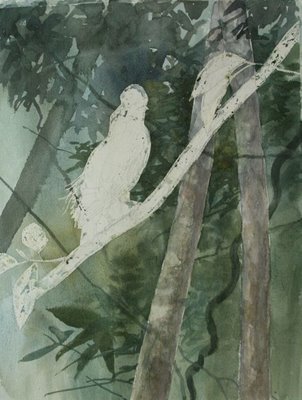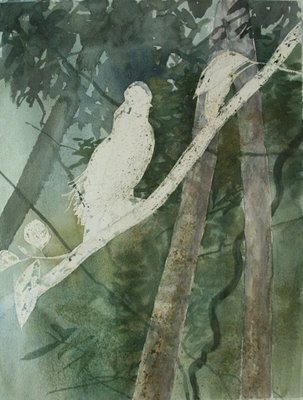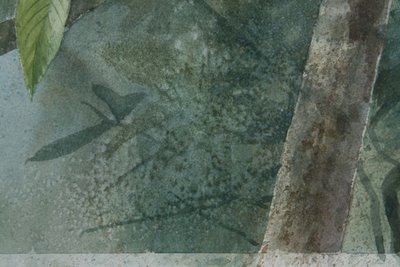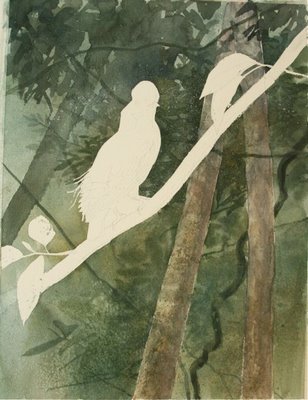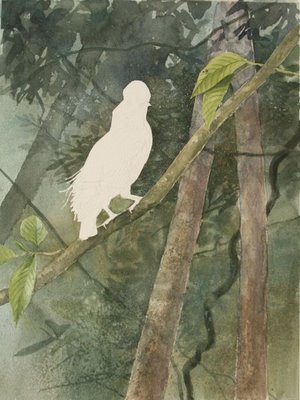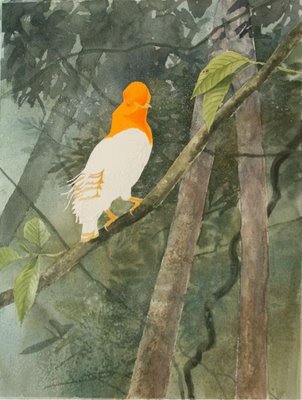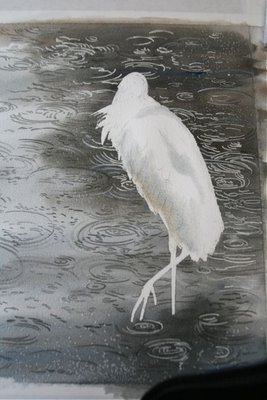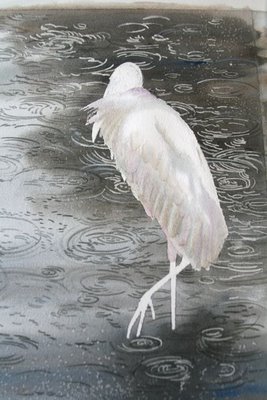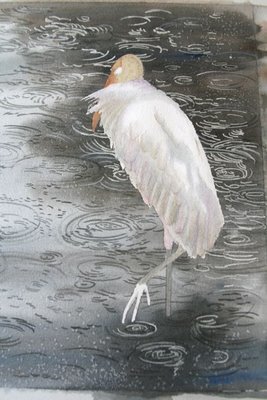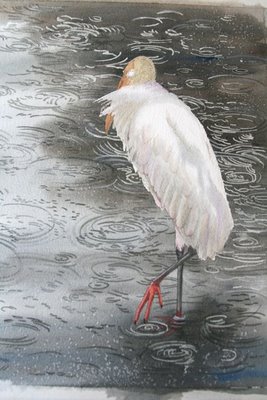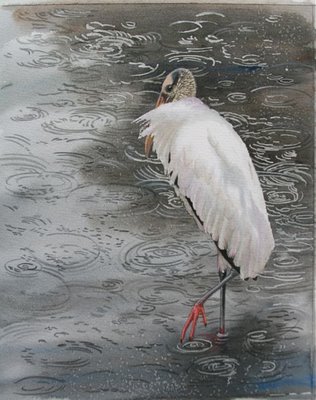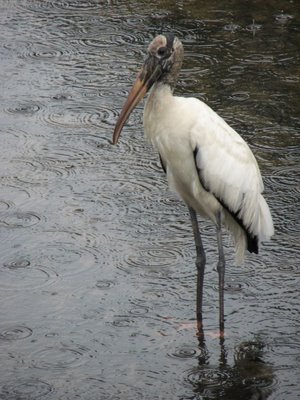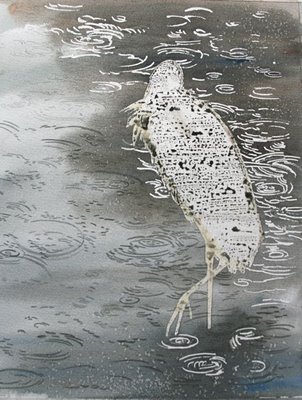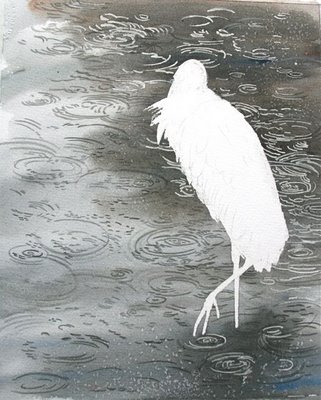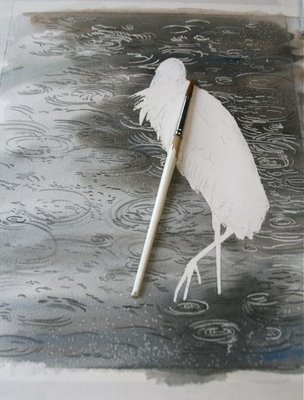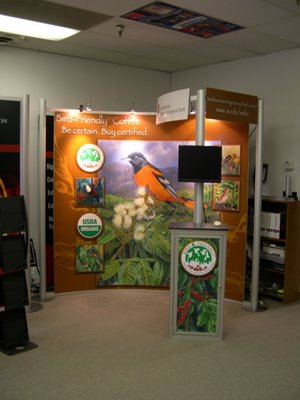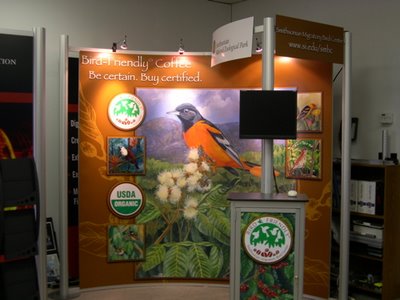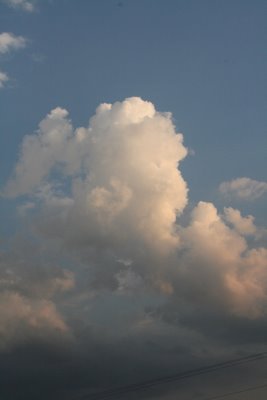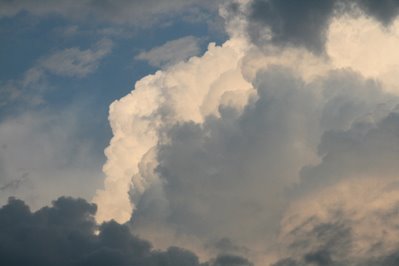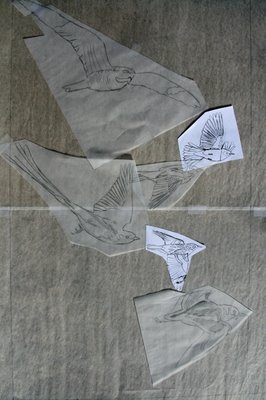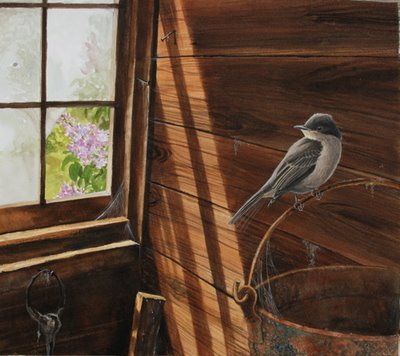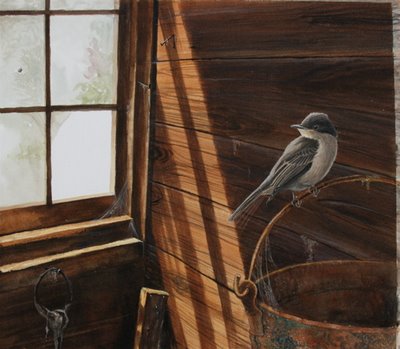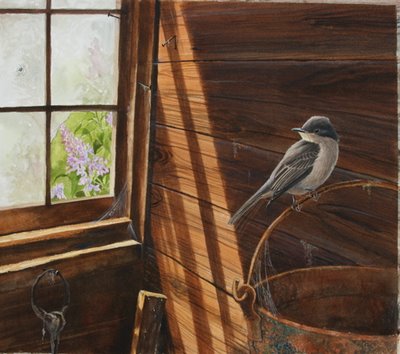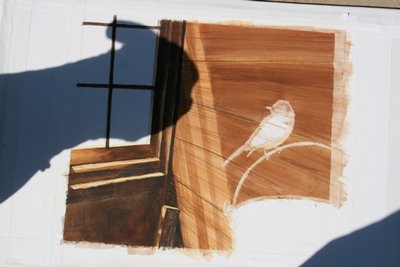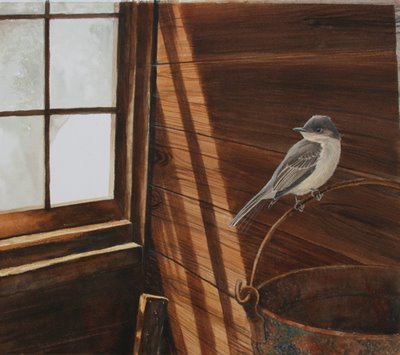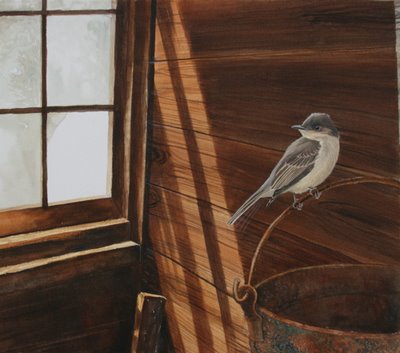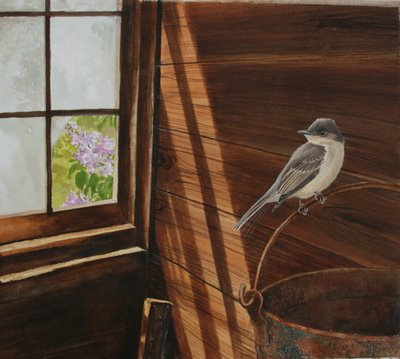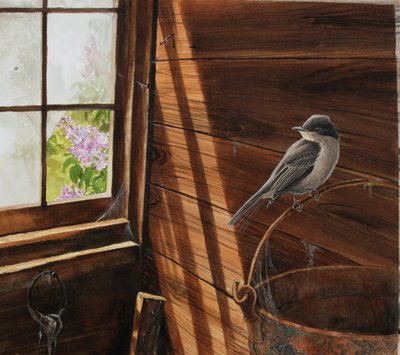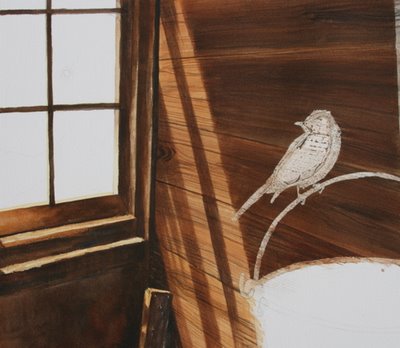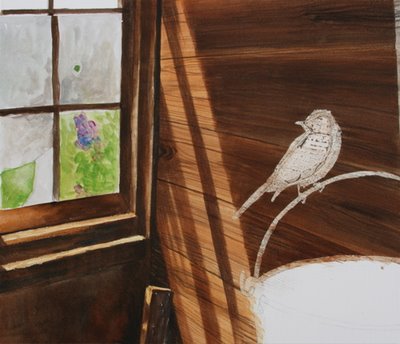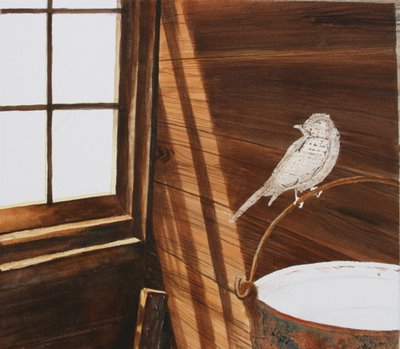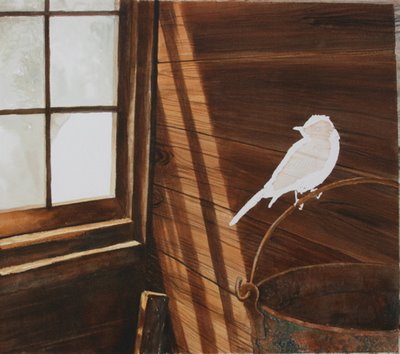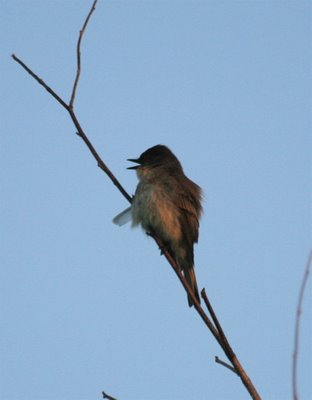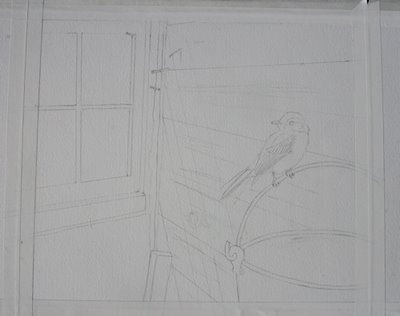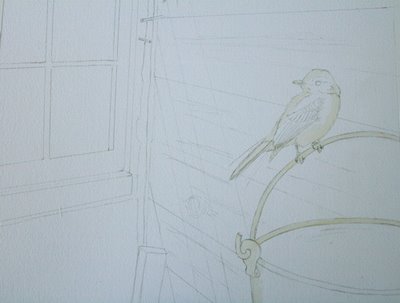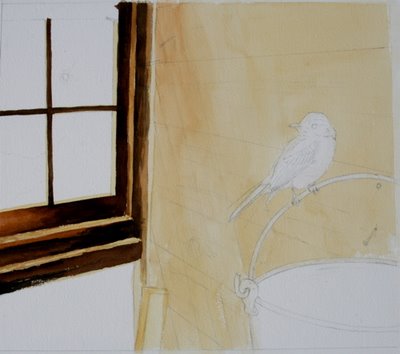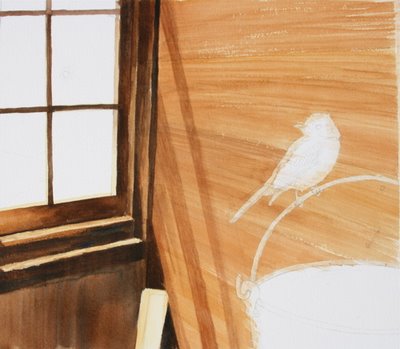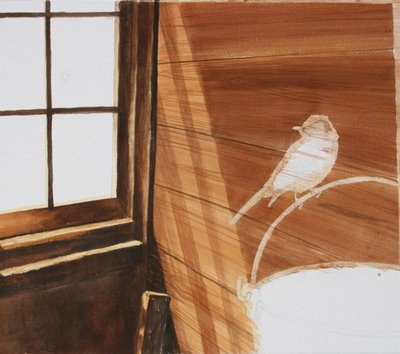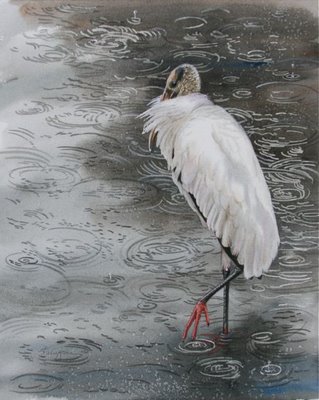
We're not done with Guyana, not by a long shot. But I need a little break, because I've fallen behind thanks to the Christmas madness. So the next three posts are about painting.
I'll tell you a secret. Since I've started blogging, since photography and daily exercise of my writing muscles have taken increasing prominence in my creative life, I haven't painted very much. In fact, I've probably painted less in the last two years than at any time of my life. Complaining? Nope. Just pointing it out. I'm happy with what I am; my creative output is as high as ever; it's just in a different form than before. I'm thinking more in terms of commentaries and essays and photos than in drawings and paintings these days.
Having admitted that to myself, accepted it, and found no shame in it, I still love to paint. It's just harder to work up to it. I'm sure you creative souls out there know exactly what I'm saying. You think, "Well, today I'll start that painting." (Substitute whatever significant creative endeavor you wish for the word "painting.") And then you look, and the orchids all need to be repotted. Or the studio's a mess, and you can't work in a mess like that. Or you need to vanquish a huge clothes monster lurking behind the bedroom door. Or...whatever you can come up with. I've used all those excuses and more.
What's behind that avoidance behavior, at least on my part, is fear. Fear that I have lost it. Fear that I'll climb on the creative bicycle and have a horrible wreck, a tangle of rubber and metal. Mistrust of myself, my own power to make something however I want to make it. It's stupid, it's a huge waste of time, but it does tend to get the house cleaned and the trash gathered and the laundry baskets emptied. And it also gets me a blocked up soul.
So I put off starting this painting for weeks, until it got close to when it was due (early December). It's a commission, a secret Christmas present for a Florida fan of Letters from Eden who also happens to be a photographer, commissioned by her fiancee. One of the nice things about painting on commission is that you meet the nicest guys, who want to surprise their girlfriends or wives with something you've painted just for them.
By the way, he couldn't wait until Christmas to give it to her, so I'm not spoiling anything here.
Commissions get me off my creative duff. I had no more excuses. So let's paint a wood stork in the rain, shall we?
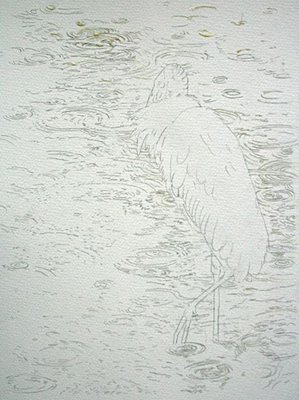
This was a private commission with very specific parameters. The commissioning party wanted a painting of a wood stork in the rain. Nice subject, moody; maybe a bit challenging. I had to make sure my raindrop spatters were convincing, and aligned right for the plane of the water, yet pleasingly random. I relied heavily on a photo by the surprise giftee of rain spatters on water for that, and transferred each little set of rings to the watercolor paper in pencil.
I wanted the bird to enhance the mood of solitary reflection, maybe tinged with loneliness. I wanted it to be at rest, yet alert, on the verge of changing position. So I puffed out its neck feathers as if it had been sleeping awhile, but raised one foot as if it were about to take a step and break that solitude. There was another reason I wanted to show a foot, which should be obvious in the first image in this post.
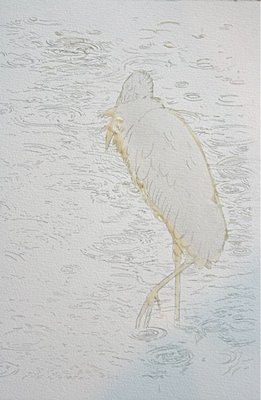
I cut the shape of the stork, which is white, out of masking film, and sealed the edges with liquid masking compound (I use Incredible White masking compound, a rubber cement-like liquid that dries to a tan rubbery finish). This would allow me to paint a nice runny wash over the whole page without worrying about going around the bird's shape.
While I was at it, I painted some of the ripples on in masking liquid, because they would be lighter than the dark ground of the water.
And remembered that I had forgotten to stretch the sheet of watercolor paper before starting my work. These things happen when you haven't painted for two months. So I sprayed the back of the sheet with water, laid it on a piece of particle board, and taped it down. It warped and bent and then as it dried it stretched taut, and was ready for my washes.
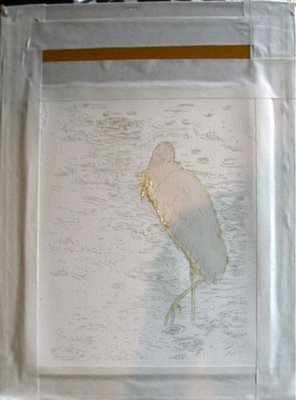
After all that prep, the fun part finally arrived. I sprayed the sheet down with water and laid in a nice juicy wash of cobalt blue and burnt umber, with a touch of German raw umber to give it an earthy cast.
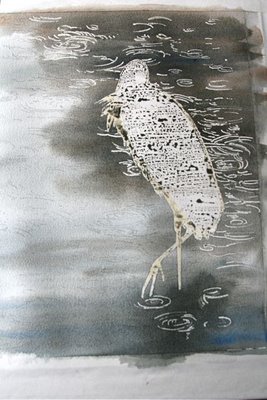
Now you can see how the masked ripples jump out. I masked the ripples only where the water was going to be dark. It was a little tricky figuring out how to do this, and I had to think about it for about a month before jumping in on it. At least that's what I told myself as I wiped counters and emptied trash.
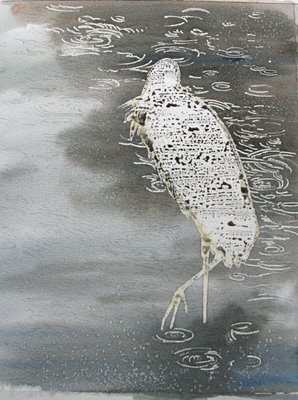
Couldn't resist sprinkling a little salt in the darker parts. Salt is hydrophilic, and it attracts water and repels pigment, resulting in little white sparkles wherever the grains fell.
In light colored water, the ripples appear as dark lines. In dark colored water, the ripples are pale lines. I had to figure out how to transition between the two zones of the painting, and make the whole thing believable. Ninety percent of watercolor painting, at least for me, is in thinking it all out. I like to plan it, and figure out exactly what I'm going to do before touching brush to paper. You have to plan watercolor because you have to leave the white parts, either by masking them, as I've done, or by painting around them. You don't have the option, as you do in oil or acrylic, of painting a dark ground and then painting white areas on top of that dark ground. In watercolor, you paint from light to dark.
When all this dried, it was time to paint those ripple lines. After that, I'd peel the masking film off the stork shape and get going on the bird. Dessert!
Labels: creative blockage, painting step by step, Watercolor painting, wood stork

